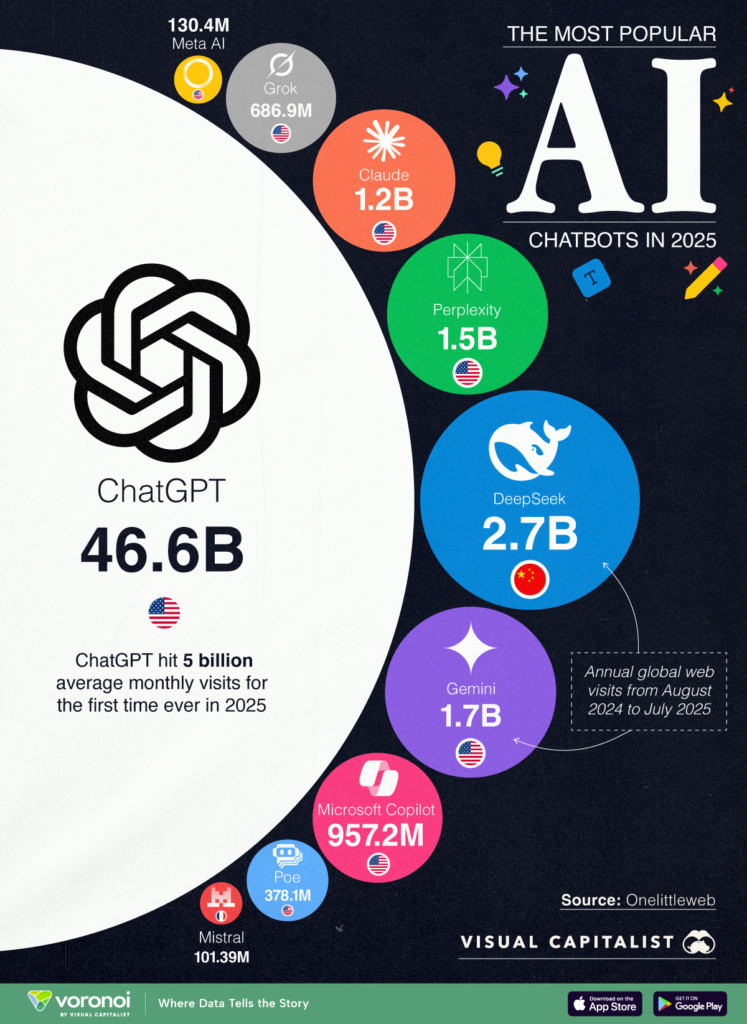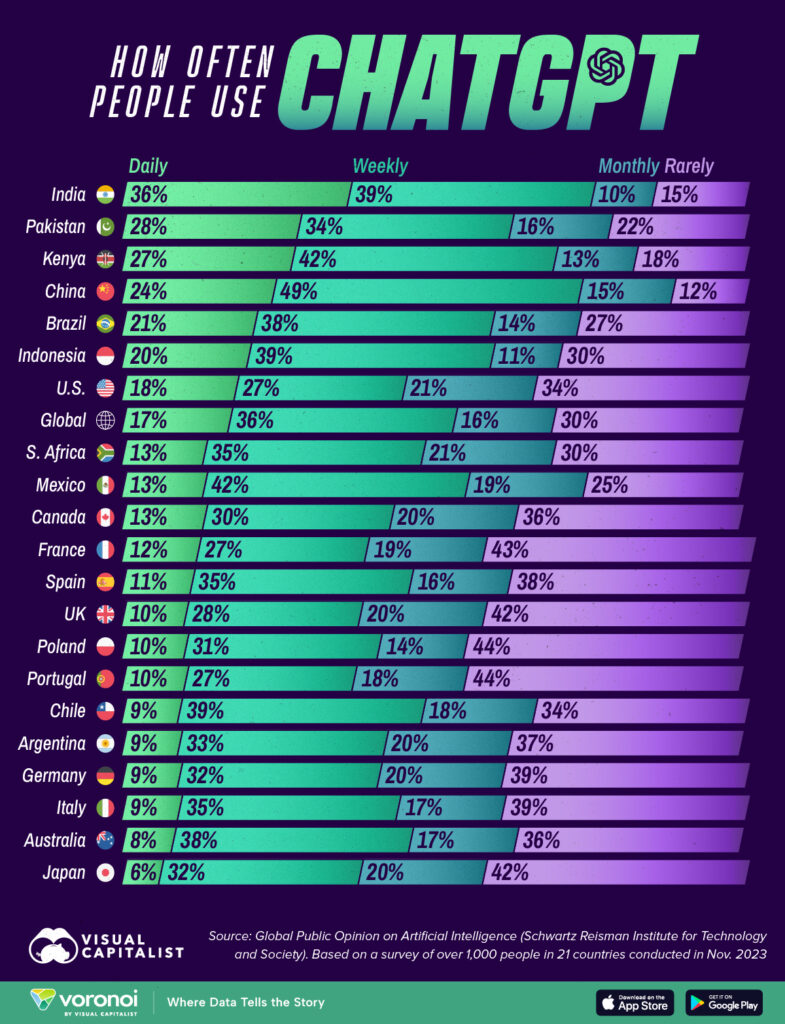Chatbots have come a long way from the quirky digital curiosities of the early 2000s (like AOL Instant Messenger’s SmarterChild) to the sophisticated AI chatbots and agents we see today. They’ve become essential tools in both business and daily life.
These tools are having an increasingly global impact, answering customer service questions on retail sites, guiding patients through scheduling in healthcare, providing instant support in banking and insurance, and even acting as digital concierges for travel and hospitality. Inside companies, they streamline HR requests, provide IT troubleshooting, and deliver training. Beyond business, they power personal assistants on our phones, manage smart home devices, and help people learn new skills and appear more caring to those they care about. This widespread adoption reflects how quickly these tools have become part of our daily lives.
Chatbots have transformed how we interact with digital services, but their uptake varies significantly around the globe. What do current usage trends say about the future of this rapidly evolving technology? A recent chart from Visual Capitalist sheds light on “The 10 Most-Used AI Chatbots in 2025,” showcasing the swift adoption and dominance of major platforms.

via visualcapitalist
ChatGPT now averages over 5 billion monthly visits and accounts for nearly half of global chatbot traffic.
DeepSeek, Gemini, Peplexity, and Claudefollow relatively closely behind.
While Poe has experienced a significant decline in usage, Xai’s Grok, Meta, and Mistral are gaining steam.
It’s also interesting to look at which countries are adopting the technologies, and which ones remain the most resistant. This chart shows “How Often People Use ChatGPT.”

via visualcapitalist
Today, in the US, fewer than 20% of citizens report using chatbots daily. Meanwhile, India, Pakistan, and Kenya all poll at over 25%.
At the lower end of the spectrum, countries like Chile, Argentina, Germany, Italy, and Australia all report daily chatbot use by fewer than 10% of the population. Japan has the lowest rate, with just 6% of people saying they use chatbots daily, and a notable 42% saying they hardly ever interact with the technology. These differences are probably due to factors such as cultural attitudes toward technology and how people report their own habits.
In contrast, “weekly usage” rates are notably more consistent across different countries, suggesting broader but less frequent interaction.
Just as search engines, social networks, and smartphones each converged on a few dominant players, the chatbot landscape is likely to consolidate, offering a clearer and more streamlined experience for users.
As chatbots advance, their impact will depend not just on technological advancements, but also on how well they build trust, integrate seamlessly, and adjust to different cultural norms. The question still stands: which platform will become the go-to digital companion?
Let’s turn this into a conversation. I’m curious about your favorite AI platforms and reasons why.

Leave a Reply